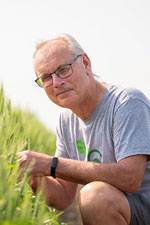Dr. Pierre Hucl (PhD)

Professor
Specialty wheat breeding
As of July 1, 2023, Dr. Hucl has transitioned to a half-time faculty appointment.

Professor
Specialty wheat breeding
As of July 1, 2023, Dr. Hucl has transitioned to a half-time faculty appointment.